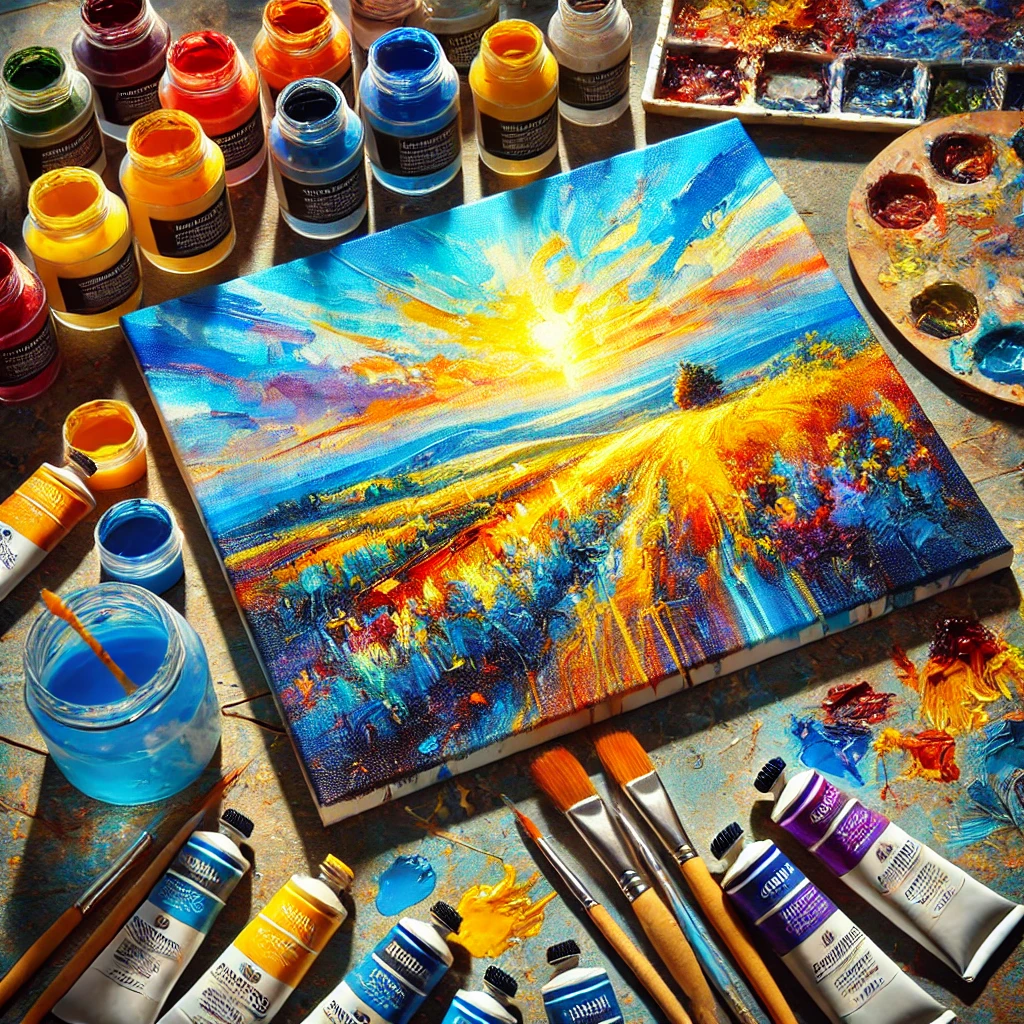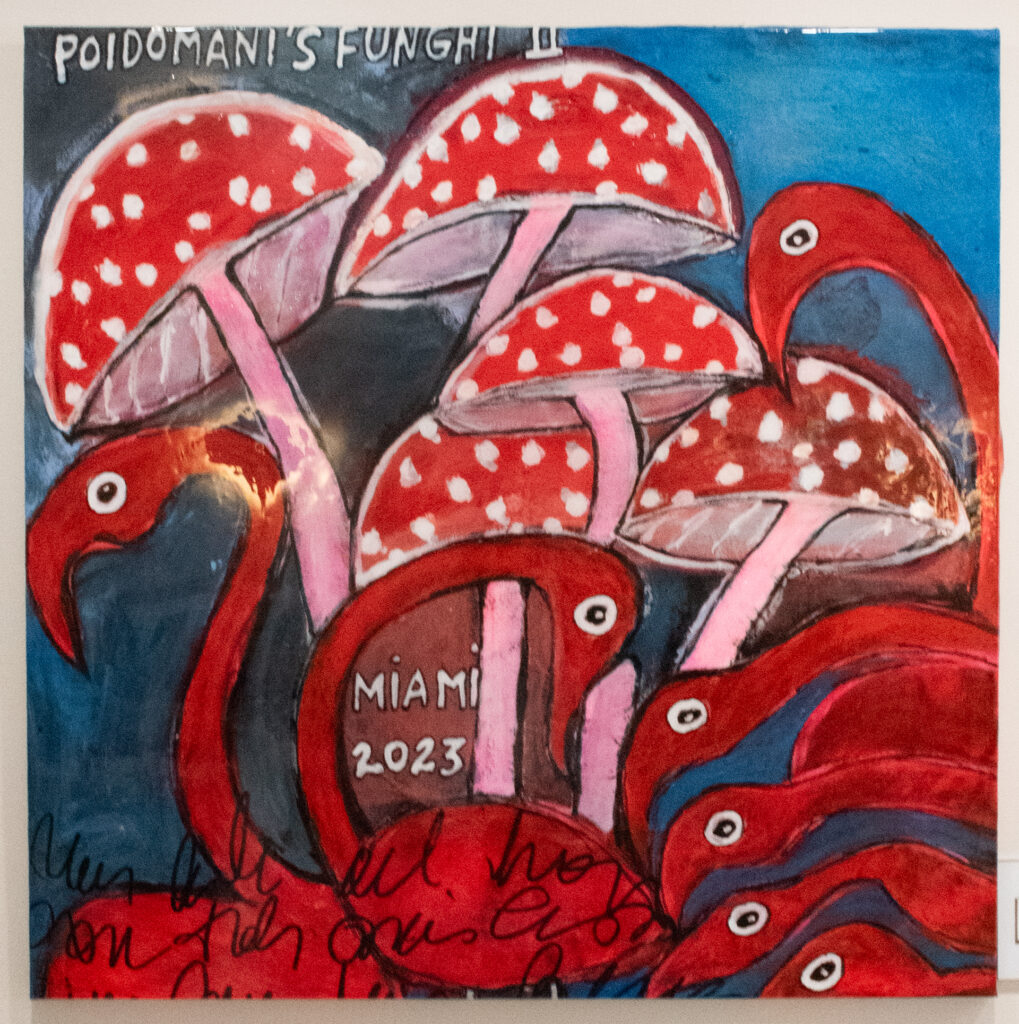
Definition and Overview
Acrylic painting is a technique that uses acrylic paints—fast-drying colors made by suspending pigment in an acrylic polymer emulsion. These paints can be diluted with water but become water-resistant when dry, offering artists versatility.
Historical Context of Origin
Acrylic paints were first developed in the 1930s by German chemist Otto Röhm. However, they didn’t become commercially available in the United States until the 1950s. The introduction of acrylics provided artists with a new medium that combined the advantages of oil and watercolor paints, leading to innovative artistic expressions in the mid-20th century.
Key Characteristics or Features
- Fast Drying Time: Allows for quick layering and overpainting.
- Versatility: This can mimic the appearance of oils, watercolors, and gouache.
- Durability: Resistant to cracks and yellowing over time.
- Adhesion: Can be applied to various surfaces, including canvas, wood, paper, and fabric.
- Easy Cleanup: Brushes and tools can be cleaned with water before the paint dries.
Notable Examples of Figures
- Andy Warhol: Used acrylics in his iconic pop art pieces.
- David Hockney: Known for his vibrant acrylic paintings of swimming pools and landscapes.
- Helen Frankenthaler: Pioneered the soak-stain technique using diluted acrylics.
Interesting Fact or Anecdote
The quick-drying nature of acrylic paints once accidentally caused artist Morris Louis to create a new technique. When pouring diluted acrylics onto unprimed canvas, the paint soaked through, developing the Color Field painting movement.
Visual Illustration or Imagery Suggestions
- A side-by-side display of acrylic paints in varying consistencies—from heavy body to fluid.
- An image showing an artist layering acrylics to create texture.
- A diagram illustrating the different tools (brushes, palette knives, sponges) used in acrylic painting.
Modern Relevance or Application
Today, acrylics are prevalent in contemporary art for their adaptability and are often used in mixed-media works. Their compatibility with various additives and gels allows modern artists to experiment with texture, transparency, and form.
Related Terms or Concepts
- Mixed Media: Artworks combining acrylics with other materials like ink or collage.
- Impasto: A technique involving thick layers of paint, achievable with heavy-body acrylics.
- Acrylic Pouring: A modern method where fluid acrylics are poured to create abstract patterns.
Quotes or testimonials
“Acrylics allowed me to paint with a new kind of freedom—they dry fast and their colors remain vibrant.”
— David Hockney
Interactive Element or Prompt
Experiment with acrylic paints by creating a small abstract piece. Try using different tools, such as palette knives or sponges, to apply the paint and observe how the medium responds.
Acrylic Painting by Humberto Poidomani.
“Funghis XIX” by Humberto Poidomani is a mixed-media artwork created with acrylic on canvas and a resin coating. It showcases unique textures, colors, and forms.

